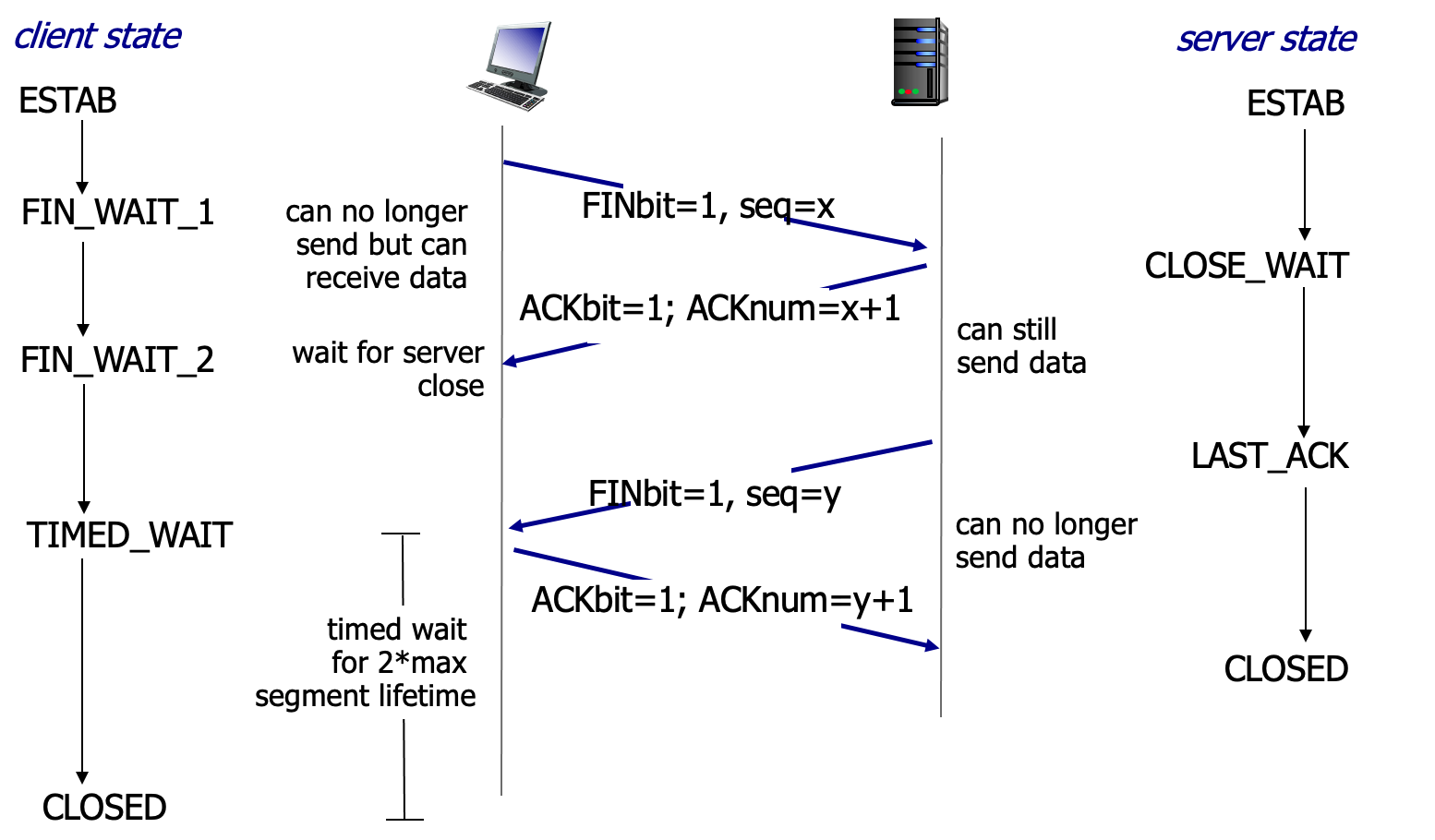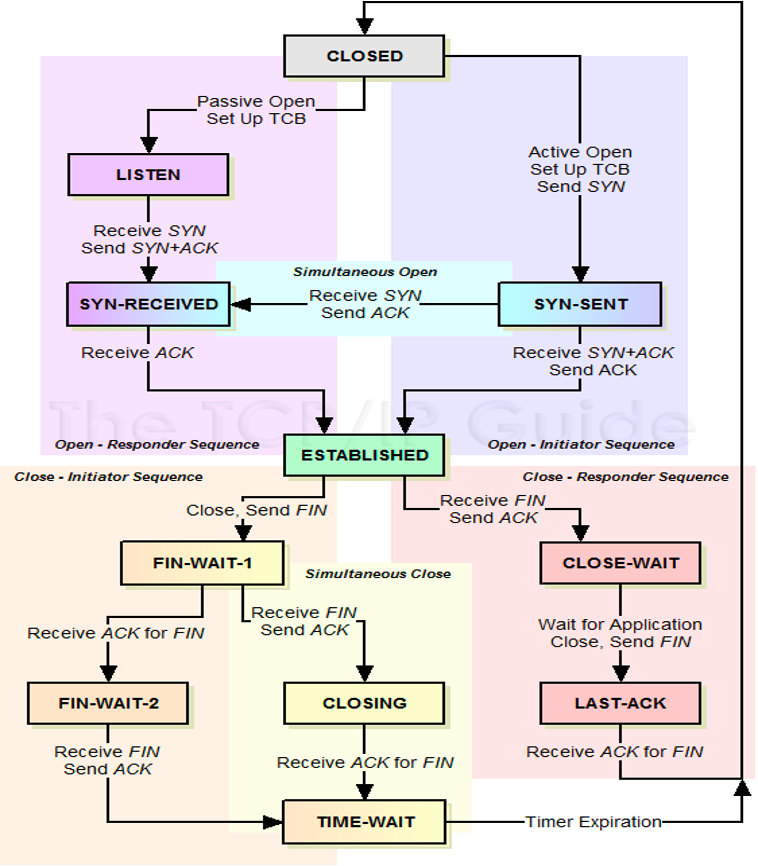1 Abstraction
Basic
Internet protocol stack
- Application: supporting network applications
- Transport: process-process data transfer
- Network: routing of datagrams from source to destination
- Data Link: data transfer between neighboring network elements
- Physical: bits to/from signals “on the wire”
Application Layer
HTTP
hypertext transfer protocol
HTTP uses TCP:
- Resolve the server to IP address (DNS)
- Set up TCP connection to the server
- Send HTTP request for the page
- Await HTTP response for the page
- Execute and fetch embedded resources, render
- Clean up any idle TCP connections
HTTP is "stateless": server maintains no information about past client requests
HTTP connections: two types
- Non-persistent HTTP: at most one object sent over TCP connection, downloading multiple objects required multiple connections
- Persistent HTTP: multiple objects can be sent over single TCP connection between client, and that server
RTT: Round Travel Time
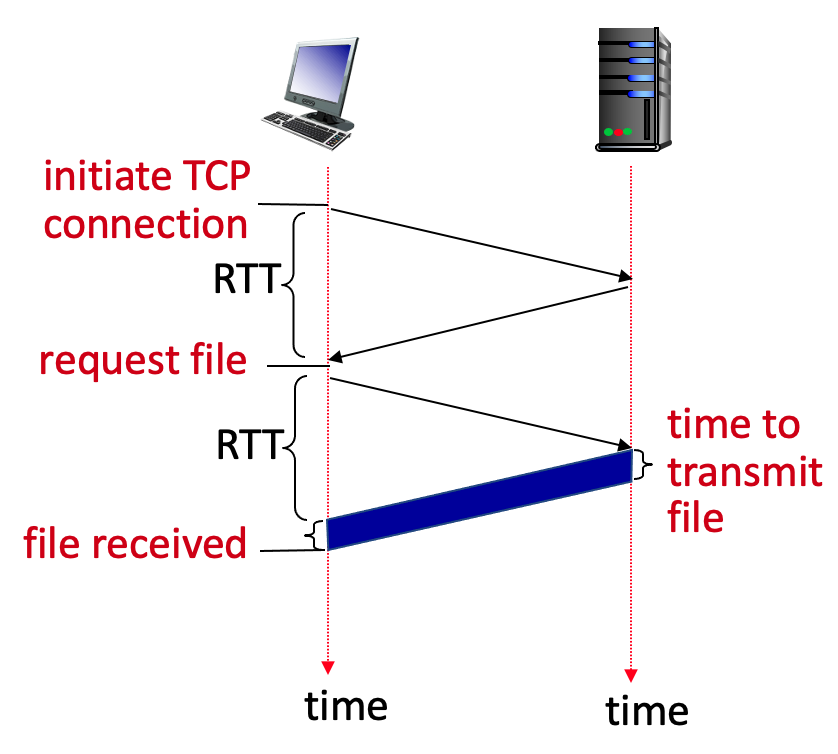
Non-persistent HTTP response time = 2RTT+ file transmission time
Non-persistent HTTP issues:
- requires 2 RTTs per object
- OS overhead for each TCP connection
- browsers often open multiple parallel TCP connections to fetch referenced objects in parallel
Persistent HTTP(HTTP1.1):
- server leaves connection open after sending response
- subsequent HTTP messages between same client/server sent over open connection
- client sends requests as soon as it encounters a referenced object
- as little as one RTT for all the referenced objects (cutting response time significantly)
HTTP 2 and 3
HTTP1.1: introduced multiple, pipelined GETs over single TCP connection
- server responds in-order (FCFS) to GET requests
- with FCFS, small object may have to wait for transmission (head-of-line (HOL) blocking) behind large object(s)
- loss recovery (retransmitting lost TCP segments) stalls object transmission
HTTP/2: decrease delay in multi-object HTTP requests
- methods, status codes, most header fields unchanged from HTTP 1.1
- transmission order of requested objects based on client-specified object priority (not necessarily FCFS)
- push unrequested objects to client
- divide objects into frames, schedule frames to mitigate HOL blocking
HTTP/2 over single TCP connection means:
- recovery from packet loss still stalls all object transmissions
- no security over vanilla TCP connection
HTTP/3: adds security, per object error- and congestion-control (more pipelining) over UDP
Primary Methods
- GET gets data
- POST creates data
- PUT modifies data
- DELETE deletes data
Status Code
| Code | Meaning | Examples |
|---|---|---|
| 1xx | Information | 100 = server agrees to handle client's request |
| 2xx | Success | 200 = request succeeded; 204 = no content present |
| 3xx | Redirection | 301 = page moved; 304 = cached page still valid |
| 4xx | Client error | 403 = forbidden page; 404 = page not found |
| 5xx | Server error | 500 = internal server error; 503 = try again later error |
URL
uniform resource locator
<protocol>://<hostname>/<path>?<query>#<fragment_id>
fragment_id points to the HTML element with the given ID
Transport Layer
- TCP: Transmission Control Protocol
- reliable, in-order delivery
- flow control: sender won’t overwhelm receiver
- congestion control: throttle sender when network overloaded
- connection-oriented: handshaking initializes sender, receiver state before data exchange
- UDP: User Datagram Protocol
- unreliable, unordered delivery
- connectionless: no handshaking between UDP sender, receiver
- services not available: delay guarantees, bandwidth guarantees
Multiplexing and demultiplexing
Multiplexing, demultiplexing: based on segment, datagram header field values
- TCP: demultiplexing using 4-tuple: source and destination IP addresses, and port numbers
- UDP: demultiplexing using destination port number (only)
TCP
Sequence numbers: byte stream "number" of first byte in segment’s data
Acknowledgements: seq # of next byte expected from other side or cumulative ACK
Establishing and Closing Connection
Problems with 2-way handshake:
half open connection(no client)
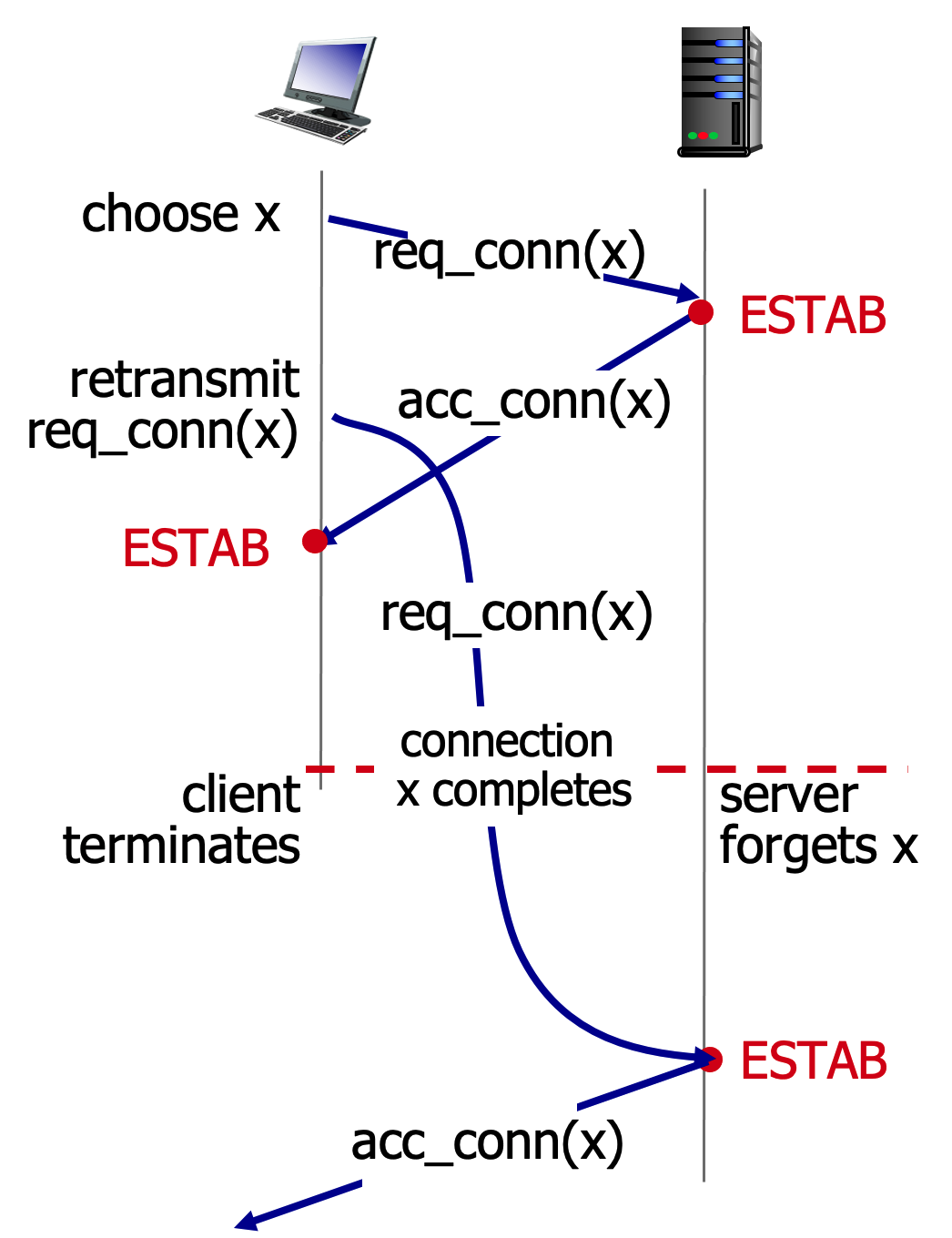
duplicate data accepted
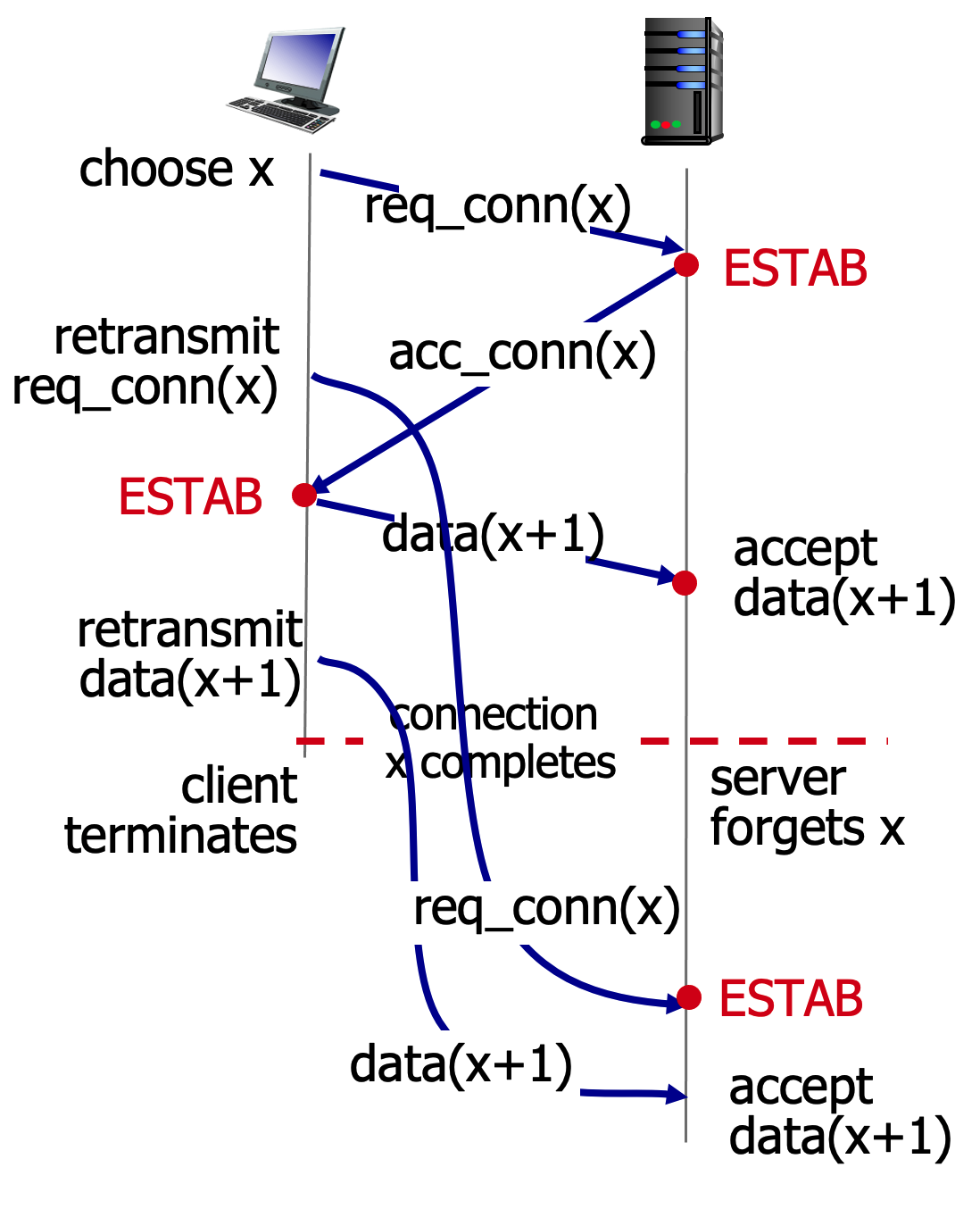
3-way handshake
Client sends a SYN to Server Server returns a SYN acknowledgment (SYN ACK) Client sends an ACK to acknowledge the SYN ACK
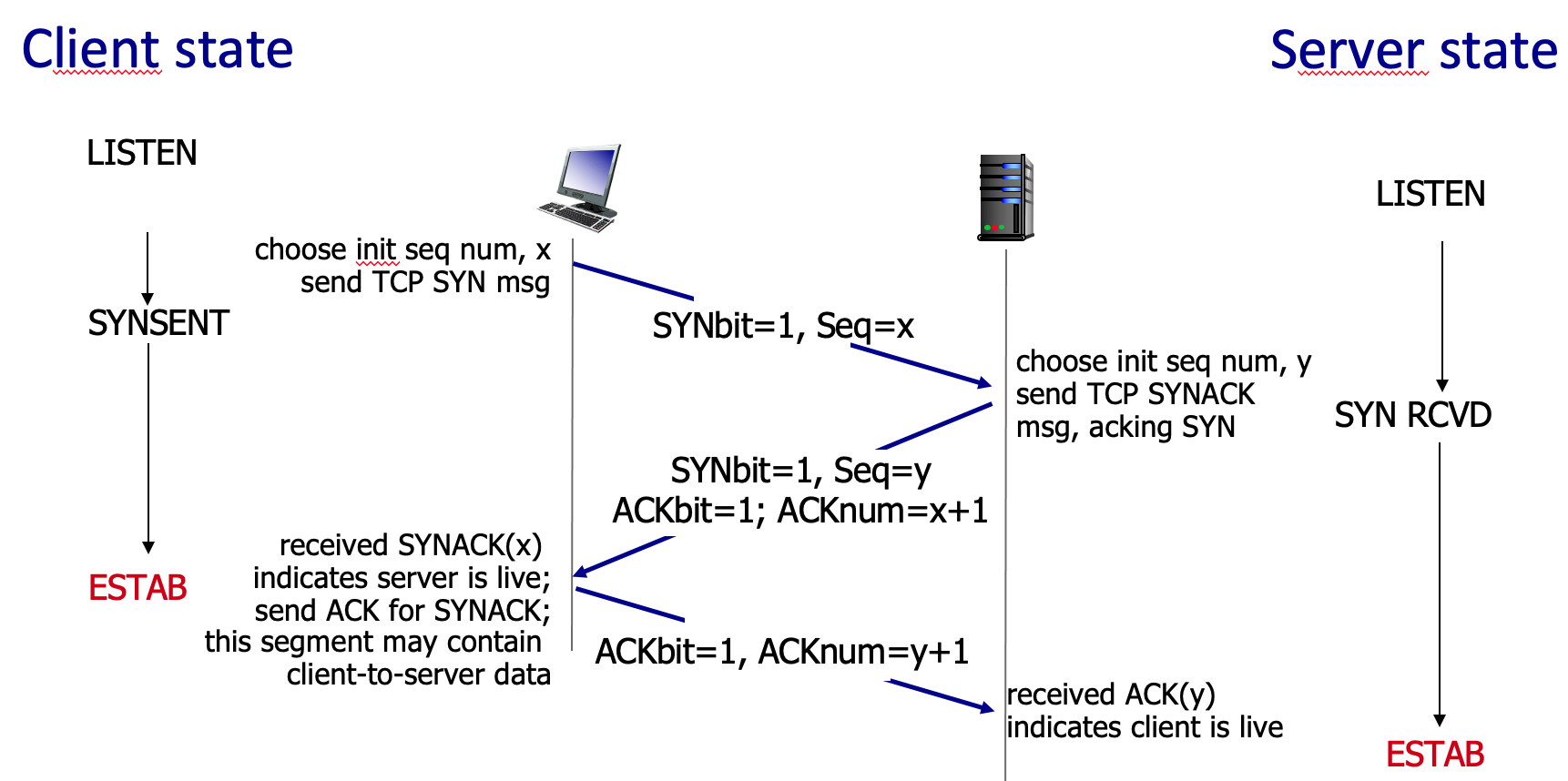
4-way handshake
- client, server each close their side of connection
- send TCP segment with FIN bit = 1
- respond to received FIN with ACK
- on receiving FIN, ACK can be combined with own FIN
- simultaneous FIN exchanges can be handled
